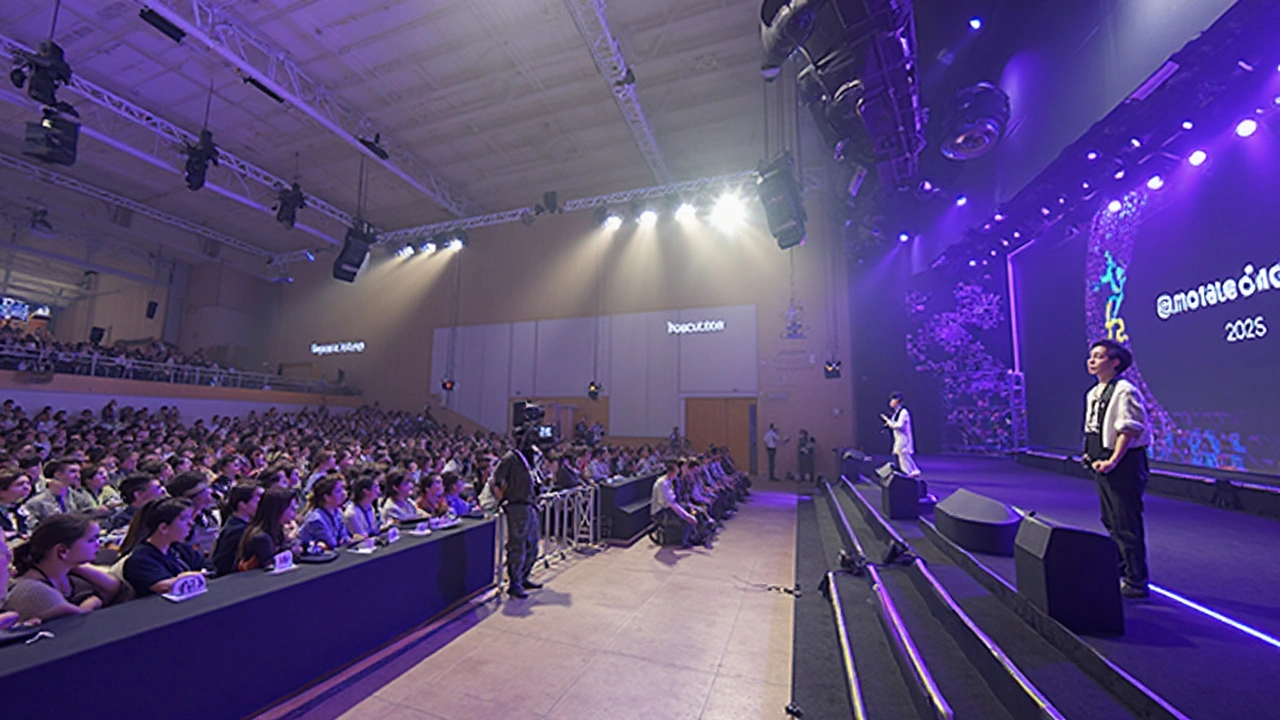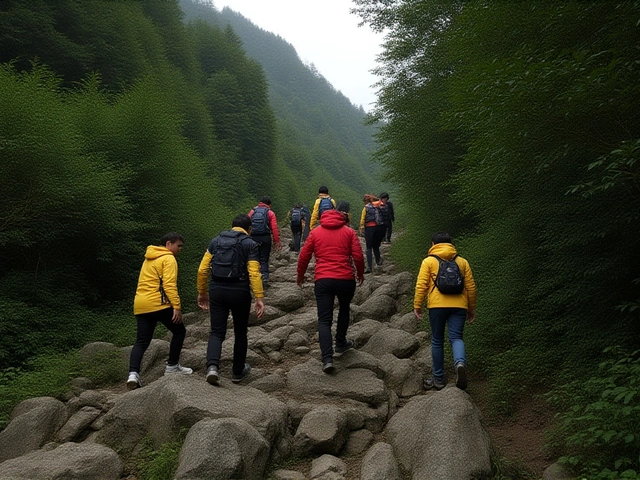G-Dragon Blends AI and K-pop at Innovate Korea 2025
If you think K-pop and artificial intelligence sound like a wild mix, G-Dragon just made that real at the Innovate Korea 2025 forum. Held at the high-profile Korea Advanced Institute of Science and Technology (KAIST) on April 9 and 10, the event was a magnet for big ideas on where technology can take music, art, and public imagination. G-Dragon—yes, the same superstar who redefined K-pop cool—took on a new role not in a stadium but behind a podium, as a visiting professor.
On the panel titled The Future of AI and Enter-tech, he sat alongside Professor Lee Seung-seob from KAIST’s mechanical engineering department, Galaxy Corporation CEO Choi Yong-ho, and moderator Professor Kim Sang-kyun from Kyung Hee University. The group tackled how high-tech concepts like machine learning and generative AI are no longer just for labs—they’re fast becoming inseparable from the music and entertainment everyone loves.
Here’s the real kicker: For G-Dragon, this isn’t just talk. His agency, Galaxy Corporation, and KAIST are out to launch the world’s first K-pop-powered attempt to reach extraterrestrials. Their plan? Beam G-Dragon’s AI-created tracks and videos out into the cosmos, plugging into NASA-led SETI research looking for signs of life beyond Earth. If aliens love K-pop, G-Dragon could be their first idol.
Space Music, Enter-Tech, and K-pop’s New Playground
This project is just the next step in a partnership that kickstarted in 2024, when Galaxy Corporation and KAIST opened an R&D center focused on AI's potential in K-pop. Think of it as a creative lab where scientists and musicians collide, and ideas like AI song production, deepfake performance, and virtual fan interactions are cooked up. G-Dragon didn’t sugarcoat the transition; he’s open about the challenges in swapping the stage for lecture halls, emphasizing that for all the technology out there, making sure these advances actually reach and inspire fans is the real test.
Besides the tech talk, G-Dragon’s style again made headlines. He rocked an outfit that defied easy description—picture a layered straw fedora, a checkered trench, and bold stripes. Comfort doesn’t always mean boring, especially when you’ve built a career out of choreography, breaking norms, and setting trends. His look only added to the electric, boundary-pushing tone of the event.
For G-Dragon, his stint as a visiting professor is more than just a resume line. After being appointed last year, he’s invested in making the world of tech and creativity accessible to more than just coders or producers—it’s about sparking curiosity, challenging the status quo, and seeing how far K-pop can actually go. Now, with a space-bound AI music project on the horizon, he’s literally aiming for the stars. And for fans, scientists, and possibly a distant civilization or two, it’s an experiment worth watching.










7 Comments
Behold, the convergence of synthetic cognition and rhythmic expression!!! In the grand theater of progress, we witness the alchemy of code and cadence, a true testament to humanity's audacious yearning for transcendence...; Yet, what moral compass guides this digital muse?; Do we dare to let machines serenade our souls, or do we succumb to the hubris of crafting artificial divinity??? The very notion of beaming K‑pop into the void implores us to reconsider the ethical fibers that bind art and ambition!!
Oh sure, because nothing says "deep insight" like a pop star lecturing on AI.
First and foremost, the notion of broadcasting AI‑generated K‑pop tracks into interstellar space is a bold stride that redefines the scope of cultural export.
It compels us to examine how artistic identity can be encoded, transmitted, and potentially interpreted by unknown intelligences.
Moreover, this endeavor underscores the symbiotic relationship between cutting‑edge machine learning models and the creative instincts of seasoned musicians.
The collaboration between Galaxy Corporation and KAIST illustrates a template for future interdisciplinary labs where engineers and artists co‑design experiences.
From a sociocultural perspective, the project challenges the anthropocentric view that music is a uniquely human language, suggesting that pattern recognition may be a universal conduit.
Practically, the deployment of generative AI in music production accelerates content creation pipelines, allowing for rapid prototyping of sonic textures.
Yet, there are critical concerns regarding authenticity, as listeners may question the provenance of works produced without direct human performance.
Intellectual property frameworks must adapt to accommodate contributions from non‑human agents, redefining authorship and royalties.
Additionally, the ethical dimension of introducing human cultural artifacts into extraterrestrial communication demands a reflective stance on representation.
Are we projecting a curated narrative of humanity, or an unfiltered tapestry of our diversities?
The surrounding discourse also touches on the potential for AI to democratize access to music creation, empowering emerging artists in underserved regions.
Conversely, there is a risk of homogenization if generative models rely on prevalent datasets that marginalize niche genres.
From a technological standpoint, ensuring the fidelity of transmission across astronomical distances poses formidable engineering challenges.
Signal attenuation, noise, and the need for robust encoding schemes are paramount to preserving artistic integrity.
In sum, this fusion of AI, K‑pop, and space exploration epitomizes a frontier where creativity and science intersect, urging us to contemplate the limitless possibilities while remaining vigilant about the ramifications.
It is imperative that we, as educators and innovators, champion the integration of artificial intelligence within artistic curricula, thereby fostering a generation of creators who are both technically proficient and culturally aware. By aligning pedagogical strategies with industry advancements, we can ensure that emerging talent remains competitive in an increasingly digitized ecosystem.
The cultural ramifications of this initiative cannot be overstated; we are witnessing the birth of a new planetary dialogue where sound becomes a diplomatic envoy. As a philosopher of modern media, I assert that this synthesis of technology and tradition embodies humanity's relentless pursuit of meaning beyond terrestrial confines.
Wow, this is super exciting! 😊 Can't wait to see how AI‑crafted beats will travel the cosmos. Keep pushing boundaries, team! 🌟
From an interdisciplinary perspective, the convergence of generative adversarial networks (GANs) with affective computing paradigms presents a fertile ground for the emergence of affectively resonant audiovisual artifacts. Leveraging transfer learning techniques, researchers can fine‑tune pre‑trained models on domain‑specific corpora, thereby augmenting the stylistic fidelity of synthesized compositions. Moreover, the integration of multimodal embedding spaces facilitates seamless alignment between auditory and visual modalities, enabling the orchestration of synchronized synesthetic experiences. It is essential, however, to address the computational overhead associated with high‑resolution rendering pipelines, which may necessitate the deployment of optimized inference engines on edge devices for real‑time interaction. In terms of stakeholder engagement, a participatory design framework can elicit valuable user feedback, ensuring that the resultant artifacts align with both artistic intent and audience expectations. As we contemplate the extraplanetary dissemination of such content, considerations around signal encoding robustness, spectral efficiency, and error‑correction coding become paramount to preserve the semantic integrity of the transmitted media across interstellar distances.